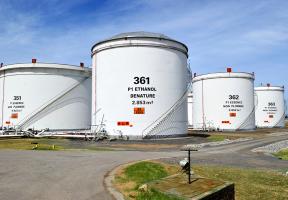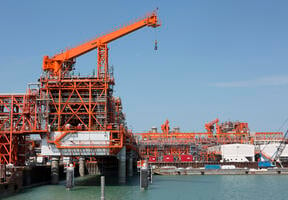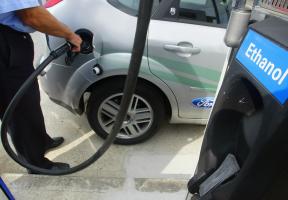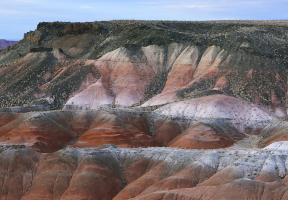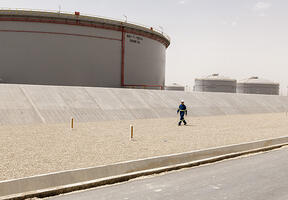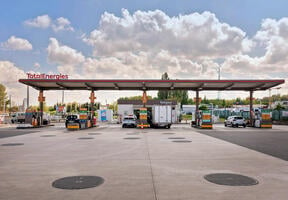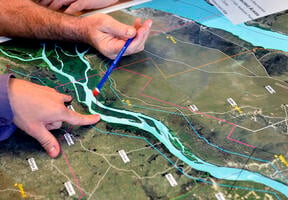Offshore Production: The Issue of Safety
10 min read
Ever since production first started to develop in 1950, it has had to deal with safety issues, just like any other complex industrial activity. The Deepwater Horizon accident in the Gulf of Mexico in 2010, which created the longest oil spill in history, and recent environmental campaigns against Arctic , have become etched in the public mind. Technological advances, particularly in the field of robotics, coupled with effective risk management, can improve safety in an industry that is set to expand.
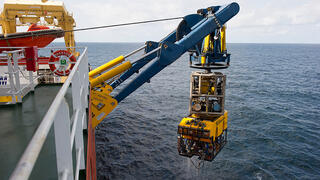
© PASCAL LAURENT - TotalEnergies - Deep offshore production requires the use of sophisticated robotic equipment. Here we see a remotely operated vehicle (ROV) being launched.
Monitoring Water and Gas Discharges
Pollution of the marine environment is the first risk taken into account in offshore exploration1. Prior to the start of operations, an assessment is carried out to establish a baseline of the site's parameters – an inventory of the marine animal life near the seabed, analyses of the water and sediments, etc. – that will be used as a reference for future measurements conducted throughout the project's lifetime.
Produced water requires the closest monitoring. This is the water that is extracted from the formation along with oil and gas. The priority is to reinject produced water into the reservoirs. If reinjection isn't feasible, the water is treated before being discharged into the sea. The standard for the oil content of discharges is very strict, i.e., generally less than 30 mg/liter.
The gas that is produced as a byproduct along with the hydrocarbons is either reinjected back into the reservoir, in order to maintain pressure, or stocked and subsequently transported to a liquefied natural gas plant.
Surveillance of Seabed Equipment
These challenges have spurred research on robotized equipment dedicated to surveillance and data collection. Remote-controlled vehicles, equipped with cameras, sensors and measuring systems, are able to remain on the seabed for months and travel several dozen kilometers. They can gather all kinds of information, enabling effective surveillance of:
- Geological hazards, such as faults and landslides.
- Risers and wellheads.
- The FPSO’s hull.
Safety Hazards
Safety hazards have always existed since the start of offshore development. Major accident risks are associated with platform operations, more than with underwater activities.
On July 6, 1988, an explosion and fire occurred on the Piper Alpha, a platform off the coast of Scotland operated by Occidental Petroleum. It resulted in 167 fatalities and a financial loss of more than $3 billion (based on exchange rates at the time).
On April 20, 2010, the explosion and fire that occurred on the Deepwater Horizon platform in the Gulf of Mexico killed 11 people, before creating the largest oil spill in history and significant environmental damage. In addition to the human and environmental impact, these accidents are major financial disasters. BP has already paid $37 billion in fines, and the settlement of outstanding claims could reach $17 billion.
Gas leaks, such as the one that occurred on Total's Elgin platform in the North Sea on March 25, 2012, have a smaller environmental impact, but the repair operations are extremely complex. Although no one was injured, it took nearly two months to stop the leak by pumping heavy mud into the well.
The only way to manage risks effectively is to develop better technologies, monitor installations on a regular basis, upgrade standards and practices and produce advanced intervention tools.
Ecologically Sensitive Areas
The financial cost of the Deepwater Horizon accident, as well as the potential damage to BP's reputation, led several international companies to cut back their operations in ecologically sensitive areas, especially in the Arctic region.
Due to technological advances and the gradual melting of the ice pack, oil companies have been conducting exploration campaigns between the North Pole and the Arctic Circle. Iceberg drift poses a threat to the facilities however, and the extreme cold makes it very costly to conduct operations, particularly in a context of lower oil prices. Owing to low profitability, environmental action and the risk of pollution with devastating damage, producers are reducing their investments. Most Arctic operations are focused on the Norwegian coast and the shallow offshore waters in Western Siberia, Russia.

